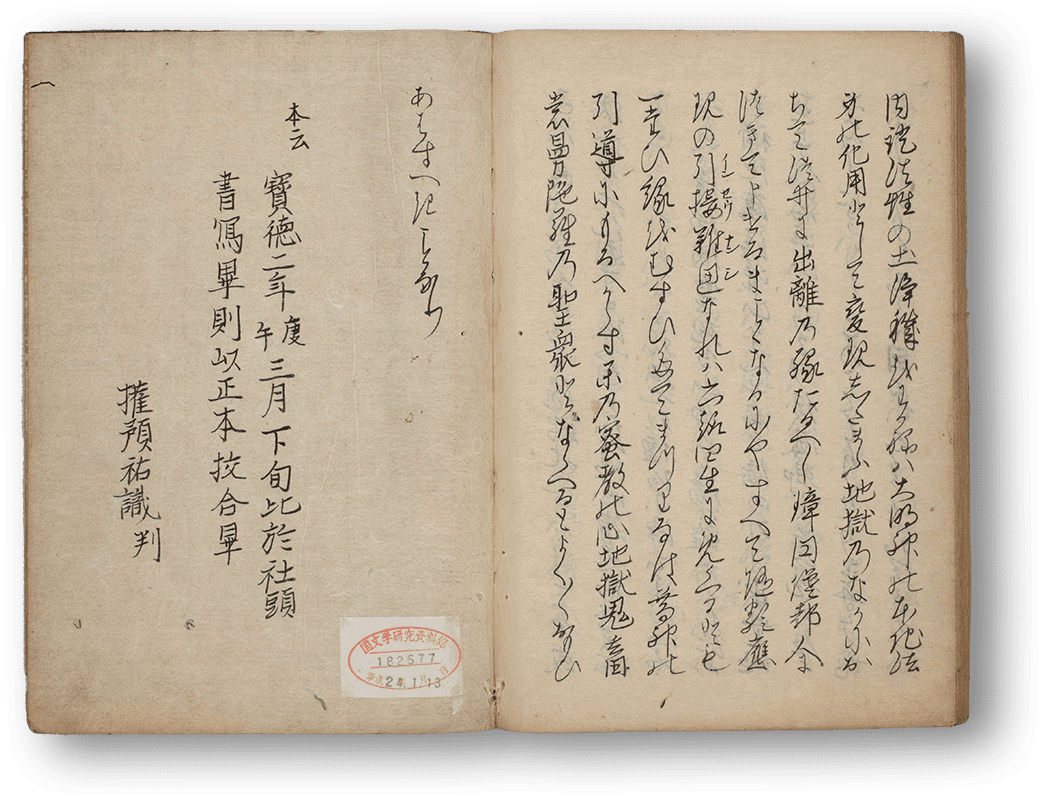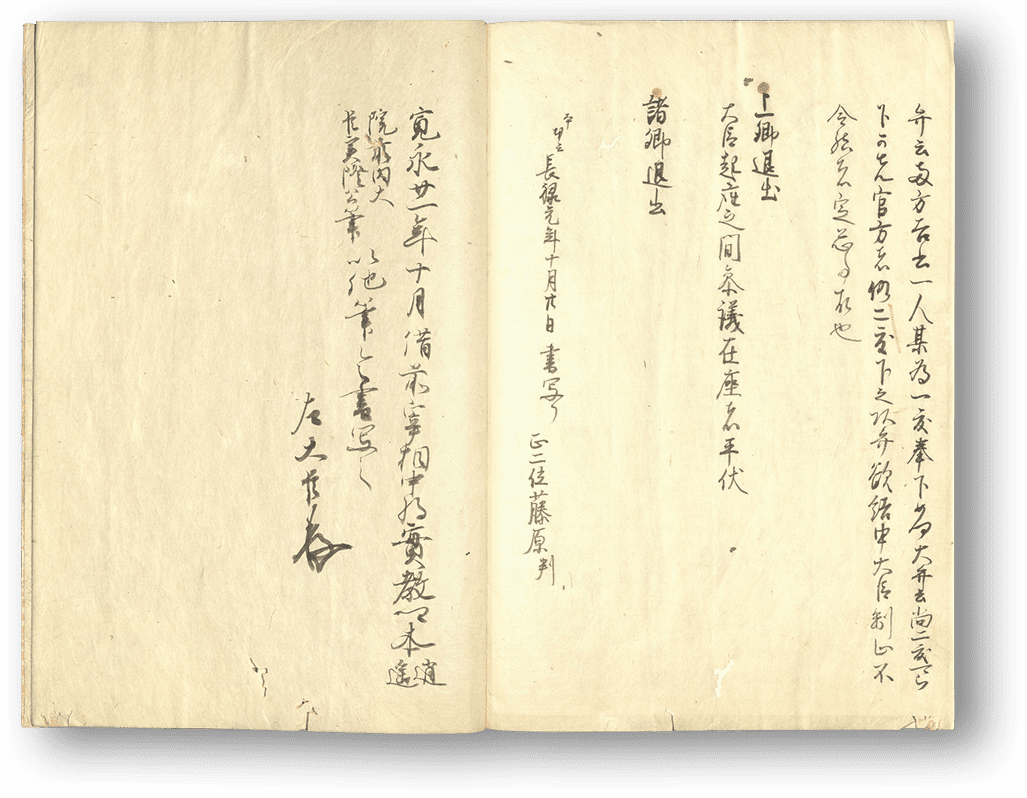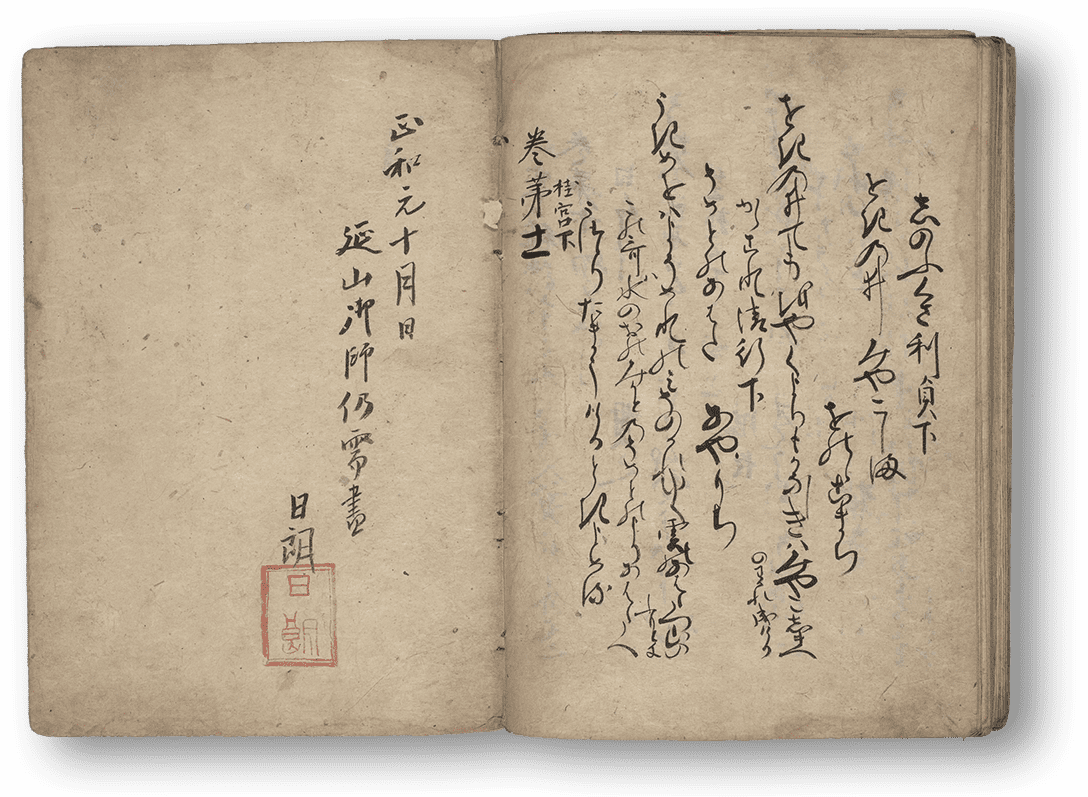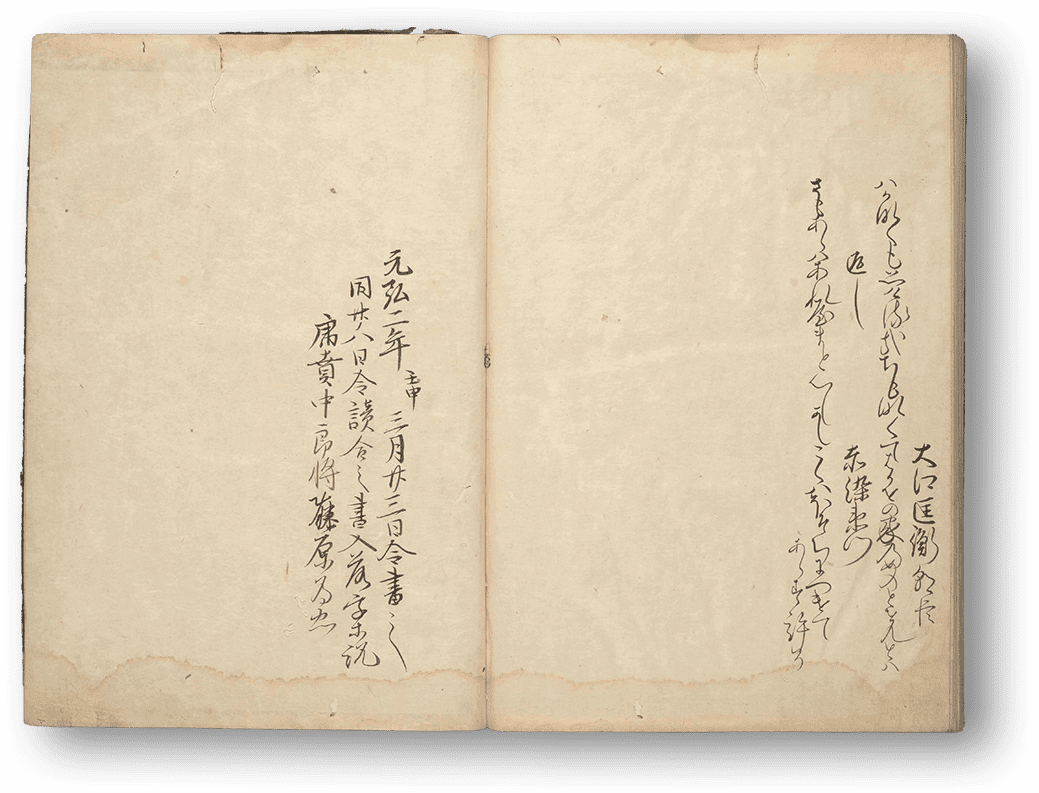Issues of Okugaki and Kanki - 奥書と刊記の問題
When it comes to Japanese books, okugaki of a manuscript book and kanki of a printed book are important in knowing the nature of the book, the year of publication and how the book was produced. In the case of okugaki, however, its nature needs to be identified. In addition, kanki is not added to all books. The following explains such issues.和書において、写本の奥書と版本の刊記は、その本の素性・製作年代・製作環境などを知る上で重要なものです。しかし、奥書はその性質について判別が必要であり、また刊記は必ずしもあるとは限りません。ここでは、それらの問題について解説します。
Hon Okugaki and Shosha Okugaki - 本奥書と書写奥書
Okugaki that was originally in the book used for the transcription (teihon/oyahon or the original) is called hon okugaki, while one that was written when transcribing that book is called shosha okugaki.奥書のうち、書写に用いた本(底本・親本)にあったものを本奥書、その本の書写に当たって書かれたものを書写奥書と言います。
Hon Okugaki and Shosha Okugaki - 本奥書と書写奥書

Kasuga Gongen Genkie - 春日權現驗記繪
Hon Okugaki - 本奥書
When transcribing an existing manuscript book to make a new manuscript book, okugaki of the original (teihon/oyahon) is often transcribed. In the terminology of Japanese books, the original is called "hon," and this okugaki is called hon okugaki, meaning okugaki found in the original. Hon okugaki often starts with the note "Hon ni iwaku" or "the original says." If the words "han (zaihan)" are found under the signature, this okugaki can be identified as hon okugaki.既存の写本を転写して新しい写本が作られる際、底本(親本)の奥書を転記することが多い。和書では底本のことを「本」と言うので、底本にあった奥書の意味で本奥書と言う。本奥書は「本云」という注記を冠することが多くあり、また署名の下に「判(在判)」とあれば本奥書と認定できる。
Hon Okugaki and Shosha Okugaki - 本奥書と書写奥書

Gyōrui Shō - 行類抄
Shosha Okugaki - 書写奥書
Unlike hon okugaki, shosha okugaki is okugaki that was written when the applicable manuscript book was transcribed. Because hon okugaki does not always have the note of "hon ni iwaku", okugaki without such a note makes it necessary to determine whether it is hon okugaki or shosha okugaki.本奥書に対し、当該の写本が書写された際に書かれた奥書を、書写奥書と言う。本奥書は必ずしも「本云」と注記されないので、注記のない奥書は、本奥書か書写奥書かの判別が必要である。
Authenticity of Okugaki - 奥書の真偽
Okugaki provides important information on the nature of the manuscript book and how it was made, but a false okugaki may be fabricated to give authority to the book.奥書は写本の素性や書写の事情等に関して重要な情報を提供するものですが、時として権威づけなどのために、偽の奥書が創作されることがあります。
Authenticity of Okugaki - 奥書の真偽

Kokin Wakashū - 古今和歌集
False Okugaki - 偽奥書
It is not uncommon for fictional okugaki to be written in order to give authority or disguise the publication year. A fabricated okugaki may be found to be so if there is a contradiction between the persons involved and the age.権威づけや年代の偽装などの目的から、架空の奥書が書かれることも少なくない。創作された奥書は、人物と年代の矛盾などから、捏造であることが判明する場合もある。
Authenticity of Okugaki - 奥書の真偽

Senjūshō - 撰集抄
Okugaki of Unknown Authenticity - 真偽不明の奥書
In some cases, with doubtful okugaki it cannot easily be determined if it is true or false. In particular, it is difficult to determine the authenticity of okugaki without a specific person's name.捏造の疑いがあっても、容易に判定できない奥書もある。特に具体的な人物名のない奥書は判断が難しい。
Books without Shosha Okugaki or Kanki - 書写奥書・刊記のない本
Quite a few manuscript books do not have shosha okugaki, and it was not uncommon until the early Edo period for printed books to not have kanki. In treating books without shosha okugaki or kanki as reference materials, an issue is how they should be positioned.写本には書写奥書のないものも少なくなく、版本も江戸初期頃までは刊記のないことが珍しくありません。書写奥書や刊記のない本をどう位置付けるか、資料として扱う場合の課題になります。
Books without Shosha Okugaki or Kanki - 書写奥書・刊記のない本

Goshūi Wakashō - 後拾遺和歌抄
Books without Shosha Okugaki - 書写奥書のない本
Shosha okugaki is not always written when a manuscript book is made, so there are many manuscript books without shosha okugaki. In this case, the publication year needs to be identified by using all available clues, including the color of Indian ink, the writing style, ryoshi, binding and the covers.写本が作られる際は必ず書写奥書が書かれるわけではなく、書写奥書のない写本も少なくない。その場合は、年代を墨色・書風・料紙・装訂・表紙などから総合的に判断しなければならない。
Books without Shosha Okugaki or Kanki - 書写奥書・刊記のない本

Kanzan Unga Kidan - 感山雲卧紀談
Books without Kanki - 無刊記本
While printed books since the middle Edo period generally have kanki except privately published versions, printed books without kanki were not uncommon particularly until the early Edo period. In this case, the year of printing or how the book was published needs to be inferred from the style of characters, ryoshi or other elements.江戸中期以降の版本は、私家版などを除き通常刊記を持つが、特に江戸初期頃までは、刊記のない版本も珍しくない。その場合は、開版年代・出版の事情や環境などを、字様・料紙その他から推定する必要がある。
